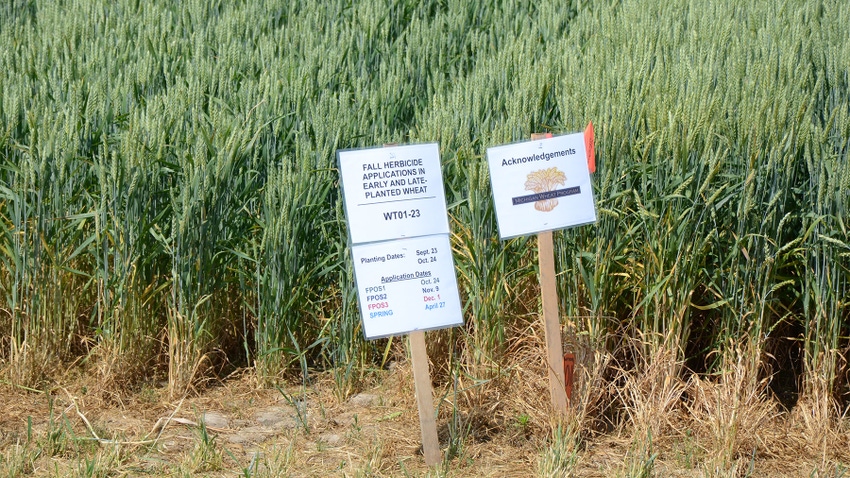
As wheat harvest winds down, many growers are about to make variety decisions and lock in seed for next year’s crop.
Varieties differ in yield potential, winter hardiness, maturity, standability, disease and insect resistance, and other agronomic characteristics. Selection should be based on performance from multiple test sites and years, advises Dennis Pennington, Michigan State University wheat systems specialist, who was one of several speakers at the June 14 Michigan Wheat Tour.
Growers need to pay attention to what does well on their farms, he says, and “look for data not only from MSU, but from your crop consultant and seed dealers — wherever you can get data on the different varieties.”
MSU plants commercial and experimental varieties from about 15 different seed companies, including its own, with about 115 different varieties planted in MSU variety trials.
“We collect a number of data points and then report it by each variety,” Pennington says. Click here to review the data for the 2022 MSU Wheat Performance Report.
In Ohio, test results are provided for the 87 winter wheat varieties evaluated in 2022.
Ohio’s wheat variety trials in four counties and overall is available at ohiocroptest.cfaes.osu.edu.
There are several factors that should be considered when selecting wheat varieties, including options that help spread the risk and from multiple sources and multiple years, Pennington advises.
“Evaluate yield data for test plot locations close to where you will plant,” he says. “Varieties perform differently in different areas. Plant more than one variety; selecting early and late maturities will spread the risk from weather- and disease-related issues.”
Pennington offers seven considerations for wheat variety selection:
1. Yield. Yield is the No. 1 trait to consider when selecting varieties for 2023. “This is where you set the bar,” he says. “After this, weather, planting date, disease, etc., will lower the bar for you. Set your bar as high as you can and eliminate as many things that can lower the bar as you can.”
2. Fusarium head blight resistance. FHB is a huge profit-robbing disease. Available varieties have a wide range of susceptibility to FHB. “If you don’t want to use fungicides, make sure you select the most FHB-resistant varieties you can find,” Pennington says. “Remember, there are susceptible varieties that yield very well with fungicide application. So carefully select varieties with FHB traits consistent with your management goals.”
3. Standability. This becomes particularly important at harvest. Lodged wheat reduces yield and increases harvesting fatigue. “If you apply manure and/or higher rates of nitrogen, consider selecting shorter varieties,” Pennington says. “In extreme cases, plant growth regulators can be used to shorten internode length and strengthen straw stems.”
4. Seed size and weight. Seed properties can affect emergence. Select seed, Pennington says, that has a minimum of 57 test weight to make sure the quality of the seed will allow it to germinate and emerge as quickly and evenly as possible. “Uneven stands lead to uneven yields and difficulties timing fungicide application at flowering for head scab,” he adds.
5. Disease resistance. As with FHB, resistance to other diseases is important to consider because pathogens lower the bar for yield potential. While most diseases can be managed with seed treatments and fungicides, the cost may be higher. “Stripe rust has robbed yield,” he says. “In recent years, the infection was so high that we were able to get a good rating system for stripe rust resistance. Check ratings in the MSU Wheat Performance Report.”
6. Early vs. late wheat varieties. Selecting varieties that flower early and late will spread out both the harvest window and risk for diseases and weather-related damage.
7. Response to management. Not all varieties respond equally to the same management strategies. Table 4 in the MSU Wheat Performance Report shows how the varieties respond at two locations to an additional 30 pounds of nitrogen, plus two fungicide applications (high management). “If you are more conservative in management, select varieties based on performance in the conventional trials,” Pennington says. “If you plant bin-run seed, you are encouraged to get it cleaned and treated prior to planting. Also, consider purchasing one-third of your seed as certified to rotate through your farm so that you are never planting seed more than two years from certified. The best option is to plant certified seed every year.”
About the Author(s)
You May Also Like






